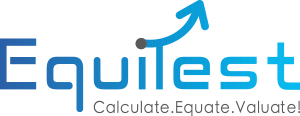Business Valuation for Buying a Tree Service Business
MediaThinking about buying a tree service business? Read on to learn how to calculate its real value before you invest.
Introduction
Purchasing a tree service business can be a profitable move, offering stable cash flow and strong local demand. However, before committing to the investment, you must determine the true value of the company. A professional business valuation helps you analyze earnings, assess risk, and ensure you are not overpaying.
Tree service companies may look similar from the outside — trucks, chainsaws, and contracts — but their financial structures and growth potential can vary greatly. This is why a thorough, data-driven valuation is essential before making a deal.
- Understanding the Tree Service Industry
The tree care and removal industry serves residential, municipal, and commercial clients. These businesses handle services such as:
- Tree pruning and trimming
- Stump grinding and removal
- Emergency storm cleanup
- Land clearing and lot preparation
Revenue stability often depends on recurring maintenance contracts and the ratio of residential to commercial clients. For example, a company with annual service contracts from municipalities or HOAs is generally more valuable than one relying solely on one-off residential jobs.
Additionally, equipment costs, insurance, and safety compliance significantly affect profitability. Heavy machinery requires frequent maintenance, and liability exposure can influence both operating costs and valuation multiples.
- Common Valuation Methods for Tree Service Businesses
Valuing a tree service business can be approached using three main methods: the Income Approach, the Market Approach, and the Asset-Based Approach.
- Income Approach (Discounted Cash Flow Method)
This method estimates the present value of future expected cash flows.
For example:
Suppose a tree service business generates $500,000 in annual cash flow and is expected to grow at 3% per year. If the appropriate discount rate (reflecting industry risk) is 15%, the estimated business value using a simple perpetuity formula would be:
Value = Cash Flow / (Discount Rate − Growth Rate) = 500,000 / (0.15 − 0.03) = $4,166,667
This assumes consistent future performance, so buyers should test different scenarios using sensitivity analysis (e.g., changing growth or discount rates).
- Market Approach (Comparable Sales Method)
This approach compares your target company to similar tree service businesses recently sold.
If comparable businesses sold at 4x EBITDA, and the target company’s adjusted EBITDA is $400,000, its estimated value would be:
400,000 x 4 = 1,600,000
This method is particularly useful when there is active deal flow and sufficient transaction data in your region.
- Asset-Based Approach
For smaller or equipment-heavy operations, the asset-based approach can be more reliable. It calculates the fair market value of all tangible assets (trucks, cranes, chippers, etc.) minus liabilities.
Example:
If the business owns $900,000 in equipment, vehicles, and inventory, and carries $250,000 in debt, the net asset value would be:
900,000 - 250,000 = 650,000
This sets a baseline for valuation, especially if the company’s earnings fluctuate or depend heavily on the owner.
- Key Value Drivers
When valuing a tree service business, certain factors can significantly increase or decrease the company’s worth:
- Recurring Contracts: Long-term service agreements with municipalities or commercial clients add predictable revenue streams.
- Equipment Condition: Newer, well-maintained equipment reduces replacement costs.
- Reputation and Safety: A business with a strong local reputation and excellent safety record commands higher goodwill.
- Skilled Workforce: Experienced climbers and certified arborists are hard to find and retain.
- Geographic Reach: A business covering a larger area or offering specialized services (like crane-assisted removal) has higher growth potential.
- Adjustments and Risk Factors
When analyzing financials, normalize EBITDA by adjusting for:
- Owner’s salary or discretionary expenses
- One-time costs (lawsuits, equipment repair, etc.)
- Related-party transactions
Common risks include:
- Seasonal demand and weather-related fluctuations
- Client concentration risk (relying on a few large contracts)
- High liability exposure in accident-prone environments
- Capital intensity (expensive machinery requiring regular upgrades)
Properly adjusting for these risks helps you calculate a fair, risk-adjusted valuation.
- Using AI-Powered Valuation Tools
Traditional valuations can take weeks and cost thousands of dollars. With modern AI-driven business valuation platforms like Equitest, buyers can input financial statements, expected growth rates, and industry data to instantly receive a detailed valuation report.
Equitest automatically applies income, market, and asset-based models, then compares the results to industry benchmarks. It also allows you to run sensitivity analyses, so you can see how small changes in growth rate or discount rate impact the business value.
This makes it easy to:
- Compare multiple acquisition opportunities
- Estimate return on investment (ROI)
- Support negotiations with data-backed valuations
- Example Valuation Summary
|
Method |
Key Inputs |
Estimated Value |
|
Income (DCF) |
$500,000 cash flow, 3% growth, 15% discount |
$4,166,667 |
|
Market (4x EBITDA) |
$400,000 adjusted EBITDA |
$1,600,000 |
|
Asset-Based |
$900,000 assets – $250,000 liabilities |
$650,000 |
In practice, the final valuation often takes a weighted average of these methods.
For example, if we give 50% weight to the Income Approach, 30% to Market, and 20% to Asset-Based, the blended value would be:
This suggests a reasonable purchase price range of $2.8M–$3.0M, depending on negotiations and due diligence.
- Final Thoughts
Buying a tree service business can be a rewarding investment — but only when supported by thorough valuation analysis.
A data-driven approach ensures you understand the true worth of the business, its risks, and its growth potential.
Whether you’re acquiring your first company or expanding your existing operations, using AI-powered valuation software like Equitest helps you make confident, evidence-based decisions.
Related items
Media
(To unmute the video clip, click the video)


